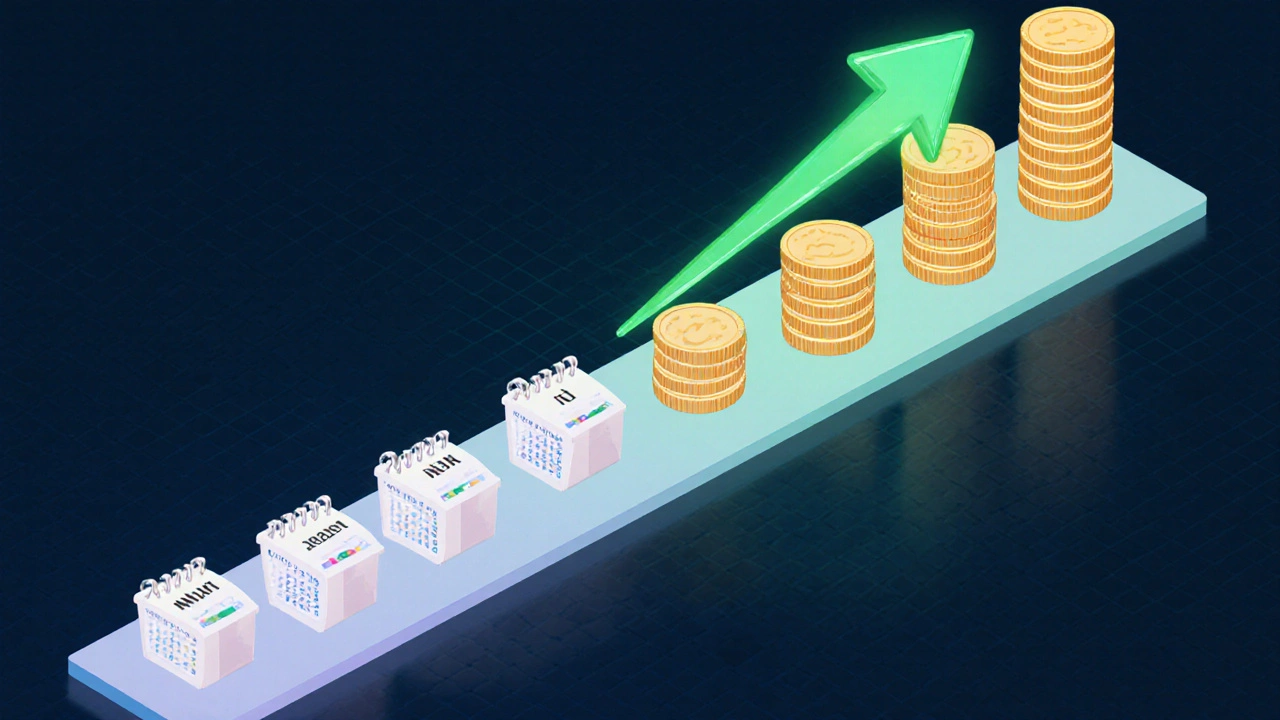Monthly Payment Calculator for a $50,000 Loan
Your Monthly Payment
This payment includes both interest and principal.
In the beginning, most of your payment goes towards interest. Over time, more of your payment reduces the principal.
Payment Comparison Table
| Loan Term | Interest Rate | Monthly Payment | Total Interest |
|---|---|---|---|
| 3 years (36 mo) | 4% | $1,479 | $3,204 |
| 3 years (36 mo) | 6% | $1,525 | $4,900 |
| 5 years (60 mo) | 4% | $920 | $5,200 |
| 5 years (60 mo) | 6% | $966 | $6,600 |
| 7 years (84 mo) | 4% | $730 | $6,120 |
| 7 years (84 mo) | 6% | $784 | $7,880 |
Ever stared at a loan amount and wondered how much you’ll actually pay each month? If you’re looking at a $50,000 loan, the answer depends on a few key factors that most people overlook until the first bill hits their inbox.
When we talk about a personal loan is a fixed‑amount, unsecured credit product offered by banks, credit unions or online lenders, usually repaid in equal monthly installments over a set period. The amount you borrow, the interest rate is the percentage charged by the lender on the outstanding principal, expressed annually, and the loan term is the total length of time you have to repay the loan, commonly expressed in years together decide your monthly payment.
Loan basics you need to master
Before you punch numbers into any calculator, make sure you understand these building blocks:
- Principal is the original amount borrowed, in this case $50,000. It’s the base on which interest is calculated.
- Annual Percentage Rate (APR) is the true yearly cost of borrowing, including interest and any mandatory fees, expressed as a percentage. APR is what you’ll see in loan offers.
- Amortization schedule is a table that shows how each payment is split between interest and principal over the life of the loan. It helps you see when you start paying down the balance.
- Lender is the institution that provides the loan, such as a bank, credit union or online marketplace. Different lenders may offer varying rates and fees.
How the monthly payment is calculated
The formula behind the monthly payment is simple but often mis‑understood. It’s a standard amortizing loan equation:
M = P × r × (1 + r)^n ÷ [(1 + r)^n - 1]
Where:
- M = monthly payment
- P = principal (the $50,000 you borrow)
- r = monthly interest rate (annual rate ÷ 12)
- n = total number of payments (loan term in months)
Let’s break it down with a 5‑year (60‑month) loan at a 5% APR:
- Convert APR to a monthly rate: 5% ÷ 12 = 0.4167% or 0.004167 as a decimal.
- Plug values into the formula: M = 50,000 × 0.004167 × (1 + 0.004167)^60 ÷ [(1 + 0.004167)^60 - 1].
- Calculate: (1 + 0.004167)^60 ≈ 1.283.
- Resulting monthly payment ≈ $943.
That $943 includes both interest and principal. In the first month, most of it goes toward interest; by the final month, almost the entire amount reduces the remaining balance.

Quick calculator: see how term and rate change the payment
| Loan term | Interest rate (APR) | Monthly payment |
|---|---|---|
| 3 years (36mo) | 4% | $1,479 |
| 3 years (36mo) | 6% | $1,525 |
| 5 years (60mo) | 4% | $920 |
| 5 years (60mo) | 6% | $966 |
| 7 years (84mo) | 4% | $730 |
| 7 years (84mo) | 6% | $784 |
Notice how a longer term dramatically lowers the monthly amount, but you end up paying more interest overall. The key is to balance cash‑flow comfort with total cost.
Why the interest rate matters more than you think
Even a 1% shift in APR can change your payment by hundreds of dollars over the loan’s life. For a $50,000 loan over five years:
- 4% APR → total interest ≈ $5,200.
- 5% APR → total interest ≈ $6,600.
- 6% APR → total interest ≈ $8,100.
That extra $1,400 at 5% versus 4% is the difference between keeping a vacation fund or having to dip into emergency savings. Shop around, consider a credit union’s lower rates, and always ask if the APR includes processing fees.
Tips to lower your monthly payment without extending the term
- Boost your credit score. A jump from 680 to 750 can shave 0.5‑1% off the APR.
- Put down a larger upfront payment. Reducing the principal to $45,000 instead of $50,000 instantly drops the payment.
- Negotiate a rate. Lenders often have wiggle room, especially if you have a solid repayment history.
- Consider a shorter introductory rate. Some lenders offer a 0% intro period for the first six months, giving you breathing room.
- Bundle with other products. A bank may offer a discount if you also open a checking account or set up auto‑pay.

Common pitfalls and hidden costs
Even if the monthly figure looks affordable, you could be blindsided by extra fees:
- Origination fees. These can be 1‑3% of the loan amount, added to the principal.
- Prepayment penalties. Some lenders charge you if you pay off early, erasing the benefit of a lower term.
- Variable‑rate clauses. A “fixed” rate for the first two years might jump afterward.
- Late‑payment fees. One missed payment can add $25‑$50 to the next month’s bill.
Read the fine print, and ask the lender to spell out any cost that isn’t included in the APR.
Budgeting checklist: can you comfortably afford $943/month?
- List all monthly net income sources.
- Subtract essential expenses (rent/mortgage, utilities, food, transport).
- Deduct existing debt payments (credit cards, car loans).
- Reserve at least 10% of net income for savings/emergency fund.
- What’s left? If it exceeds the loan’s monthly payment by a comfortable margin (at least $150‑$200), the loan is likely affordable.
Run the numbers for the three term scenarios in the table above. If the 5‑year option fits your cash flow and the total interest works for your budget, that’s often the sweet spot.
Frequently Asked Questions
How can I calculate the exact monthly payment for my $50,000 loan?
Plug the principal, APR, and loan term into the amortizing‑loan formula: M = P × r × (1+r)^n ÷ [(1+r)^n - 1]. You can also use any online loan calculator-just make sure you enter the APR (not just the nominal rate) and the total number of months.
Will a longer loan term always save me money each month?
Yes, spreading payments over more months reduces the monthly amount, but you pay more interest overall. The trade‑off is between cash‑flow comfort and total cost.
What is the difference between APR and the interest rate?
The interest rate is the percentage charged on the loan balance. APR adds any mandatory fees (origination, processing) to give you the true yearly cost of borrowing.
Can I refinance a $50,000 personal loan to get a lower monthly payment?
Absolutely. If rates have dropped since you took out the original loan, refinancing can reduce either the rate, the term, or both, which in turn lowers your monthly payment. Just watch out for new origination fees.
Is it worth paying extra toward the principal each month?
Paying extra reduces the principal faster, which cuts the amount of interest you’ll pay over the life of the loan. Even $50 extra per month can shave months off a five‑year loan and save a few hundred dollars in interest.
